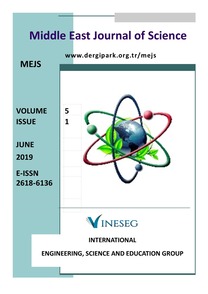COMPARATIVE ASSESSMENT OF DOSE CALIBRATORS USED IN NUCLEAR MEDICINE
Dose calibrators are used to measure the amount of radioactive to be given to the patient. It is necessary to determine the correct dose and measure the amount of radioactive material with the least possible error. To minimize these potential errors, quality control (QC) tests should be carried out periodically according to the United States Nuclear Regulatory Authority (NRC). ATOM LAB 400 (serial number:11070208 ) and 500 (serial number: 15091215) dose calibrators that are actively used in our clinic were used. The aim of this study is to compare with another recently calibrated dose calibrator to verify the dose calibrator that needs to be updated is working properly. QC tests were performed on both dose calibrators. Test results of the currently certified dose calibrator and ATOM LAB 400 dose calibrator whose certificate will be updated were found to be compatible with each other. The tests performed on both dose calibrators remained with the error limits. The calibration certificate of the ATOM LAB 400 calibrator has been updated in accordance with NRC protocol.
___
[1] Demir, B., Kaplan, A. et al., “Production cross-section calculations of medical 32p, 117sn, 153sm And 186,188re radionuclides used In Bone Pain Palliation Treatment”, KERNTECHNIK, 80, 58-65, 2015.[2]Alameen, S., Bdelfatah, AM. et.al., "Assessment of Dose Calibrators Performance in Nuclear Medicine Department in Sudan”, Sch. Acad. J. Pharm., 5, 245-250, 2016.
[3]Dale, JW., “A beta-gamma ionization chamber for substandards of radioactivity-11. Instrument response to gamma radiation”, Int J Appl Radiat., 10, 72-78, 1961.
[4]Kowalsky, RJ., Jonston, RE. et al., “Dose Calibrator Performance and Quality Control”, J. Nucl. Med. Technol., 5, 35-40, 1977.
[5] Tunçman Genç, D., Poyraz L., et al., "Nükleer tıpta kullanılan doz kalibratörlerinin kalite control testleri”, FNG &Demiroğlu Bilim Tıp Dergisi, 5, 8-14, 2019.
[6] U.S. Nuclear Regulatory Commission Code of Federal Regulations. Title 10, Part 35, Washington D.C., April 1987, Updated January 24, 2018.
[7]Zanzonico, P., “Routine quality control of clinical nuclear medicine instrumentation: a brief review”, J Nucl Med,49, 1114-31, 2008.
[8]Özkırlı, M., Bor, D.et al., "Dozkalibratörlerininperformansözelliklerininkıyaslanması”, TJNM, 4, 143-8, 1995.
[9] Cho, SG., Kim, J., et al., "Radiation Safety in Nuclear Medicine Procedures”, Nucl Med Mol Imaging, 51, 11–16, 2017.
[10]Koç, K.,“Nükleer Tıp merkezlerinde kullanılan radyoizotop kalibratörlerinde kalite sağlanması üzerine bir araştırma-lineerite testi”, Politeknik; 21, 507-11, 2018.
[11] Aya, Mohammed., Mudthir MHO. et al., “Assessment of Tc-99m Dose Calibrator Performance in Nuclear Medicine Department”, International Journal of Science and Research (IJSR). 11,36-39,2014.
[12] Alameen, S., Bdelfatah, AM. et al., “Assessment of Dose Calibrators Performance in Nuclear Medicine Department in Sudan”, Sch. Acad. J. Pharm., 5, 245-250, 2016.
- ISSN: 2618-6136
- Yayın Aralığı: Yılda 2 Sayı
- Başlangıç: 2015
- Yayıncı: INESEG Yayıncılık
Sayıdaki Diğer Makaleler
Shafi AHMAD, Sedat BİNGÖL, Saif WAKEEL
Alevcan KAPLAN, Umut ÇELİKOĞLU
ESSENTIAL ELEMENTS AND HEAVY METAL LEVELS IN SHEEP MILK AND ITS DAIRY PRODUCTS
Serap KILIÇ ALTUN, Mehmet Emin AYDEMİR
A HYBRID MULTI-CRITERIA DECISION MAKING METHOD FOR ROBOT SELECTION IN FLEXIBLE MANUFACTURING SYSTEM
Shafi AHMAD, Sedat BİNGÖL, Saif WAKEEL
COMPARATIVE ASSESMENT OF DOSE CALIBRATORS USED IN NUCLEAR MEDICINE
Merve CİNOĞLU KARACA, Duygu TUNÇMAN GENÇ, Hatice KOVAN, Mehmet MÜLAZIMOĞLU, Bayram DEMİR
Cenk YANEN, Ercan AYDOĞMUŞ, MURAT YAVUZ SOLMAZ
NEW EXACT SOLUTIONS FOR THE KLEIN-GORDON EQUATION
